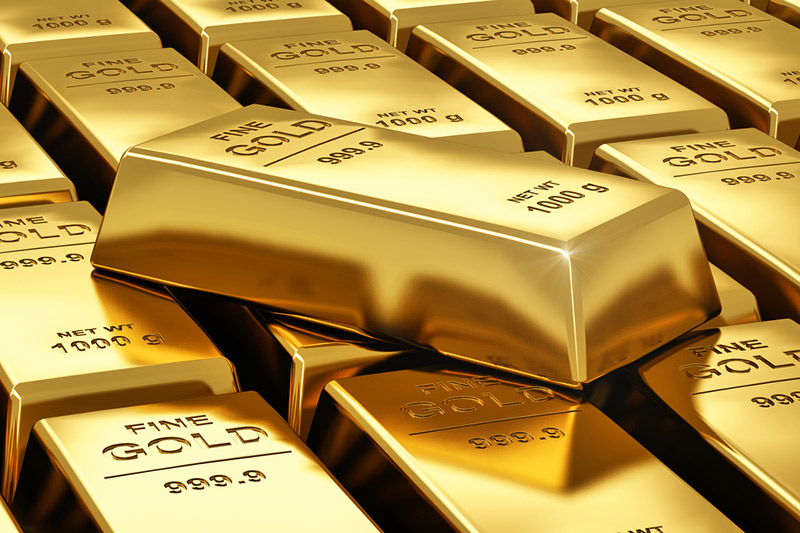Investing.com - Gold futures came under pressure during European morning trade on Thursday, as market participants looked ahead to the outcome of a European Central Bank policy-setting meeting later in the day.
On the Comex division of the New York Mercantile Exchange, gold futures for June delivery traded at USD1,647.35 a troy ounce during early European trade, shedding 0.4%.
It earlier fell by as much as 0.7% to trade at USD1,642.45 a troy ounce, the lowest since April 25.
Gold futures were likely to find short-term support at USD1,625.55 a troy ounce, the low from April 25 and resistance at USD1,672.15, the high from May 1.
Gold traders were eyeing the outcome of the ECB meeting and a subsequent press conference with ECB head Mario Draghi, amid ongoing concerns over elevated borrowing costs for vulnerable peripheral nations, particularly Spain.
Markets were expecting the ECB to leave rates on hold, but will search for clues in regards to the central bank's next course of action in dealing with an ongoing sovereign debt crisis.
Market sentiment was sharply hit on Wednesday after a string of weak data from the euro zone and the U.S. reignited fears over the outlook for global economic growth.
In the euro zone, reports showed that the unemployment rate in the single currency bloc climbed to a record 10.7% in March and final euro zone manufacturing data for April slumped to a 34-month low.
Meanwhile, data from payroll processing firm ADP showed that the U.S. private sector added 119,000 jobs in April, far short of expectations for a gain of 177,000, after an increase of 209,000 in March. It was the smallest increase in ADP nonfarm payrolls since September 2011.
The data added to fears that the economic recovery in the U.S. is losing momentum, ahead of a government report on nonfarm payrolls on Friday, after government data in March showed a slowdown in hiring.
The disappointing data prompted investors to shun riskier assets, such as stocks and commodities, and flock to the relative safety of the U.S. dollar.
Gold prices often move inversely to the U.S. dollar, as gold becomes more expensive for buyers using other currencies.
Elsewhere on the Comex, silver for July delivery dipped 0.45% to trade at USD30.51 a troy ounce, while copper for July delivery shed 0.3% to trade at USD3.776 a pound.
On the Comex division of the New York Mercantile Exchange, gold futures for June delivery traded at USD1,647.35 a troy ounce during early European trade, shedding 0.4%.
It earlier fell by as much as 0.7% to trade at USD1,642.45 a troy ounce, the lowest since April 25.
Gold futures were likely to find short-term support at USD1,625.55 a troy ounce, the low from April 25 and resistance at USD1,672.15, the high from May 1.
Gold traders were eyeing the outcome of the ECB meeting and a subsequent press conference with ECB head Mario Draghi, amid ongoing concerns over elevated borrowing costs for vulnerable peripheral nations, particularly Spain.
Markets were expecting the ECB to leave rates on hold, but will search for clues in regards to the central bank's next course of action in dealing with an ongoing sovereign debt crisis.
Market sentiment was sharply hit on Wednesday after a string of weak data from the euro zone and the U.S. reignited fears over the outlook for global economic growth.
In the euro zone, reports showed that the unemployment rate in the single currency bloc climbed to a record 10.7% in March and final euro zone manufacturing data for April slumped to a 34-month low.
Meanwhile, data from payroll processing firm ADP showed that the U.S. private sector added 119,000 jobs in April, far short of expectations for a gain of 177,000, after an increase of 209,000 in March. It was the smallest increase in ADP nonfarm payrolls since September 2011.
The data added to fears that the economic recovery in the U.S. is losing momentum, ahead of a government report on nonfarm payrolls on Friday, after government data in March showed a slowdown in hiring.
The disappointing data prompted investors to shun riskier assets, such as stocks and commodities, and flock to the relative safety of the U.S. dollar.
Gold prices often move inversely to the U.S. dollar, as gold becomes more expensive for buyers using other currencies.
Elsewhere on the Comex, silver for July delivery dipped 0.45% to trade at USD30.51 a troy ounce, while copper for July delivery shed 0.3% to trade at USD3.776 a pound.
